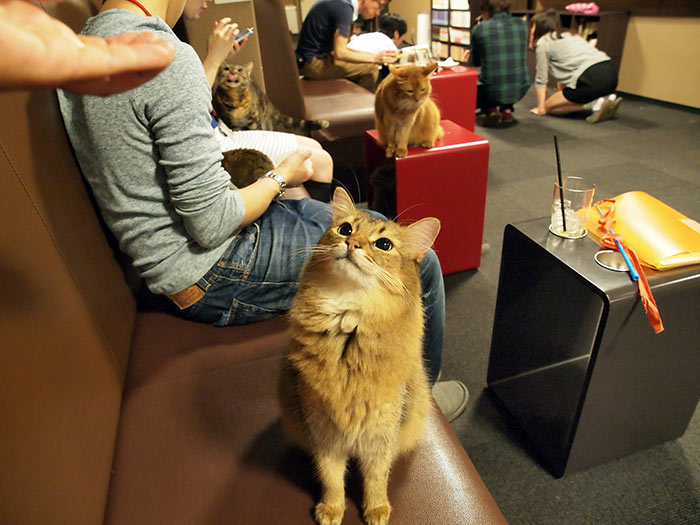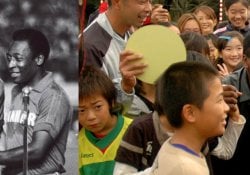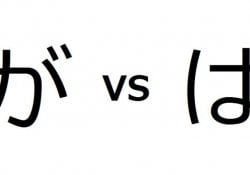Ever wondered how to say come or go in Japanese? In this article we will learn different ways to make invitations with Mashou and alternatives to the famous “Let's Go! and Come On!”.
In Japanese we use a verb form to indicate that we want to perform an action with another person. The vain in Japanese is expressed with the endings mashou, masenka, you and some others that we will analyze in depth in this article.
Índice de Conteúdo
How to say Come and Go in Japanese?
One of the highlights of this article is the mashou volitional form, but before we talk about it, let's introduce some words that can be literally translated as come or go.
- Ikou [行こう] - Let's go;
- Ikouka [行こうか] - Let's go?
- Kite [来て] - Come here;
- Nekeru [抜ける] - Get out;
It is worth noting that verbs can usually encourage an action and extend an invitation, even if the verb is not in the Mashou form that we will see later in the Post.
Read also: verb forms in japanese
“Come On!” and “Let’s Go!” derived from English
As is well known, the Japanese also use expressions of English origin in their daily lives, often as slang. See below how the Japanese use the expressions Let's Go! and Come On!
- Rettsugoo [レッツゴー] - Let's Go;
- Rettsuragoo [レッツラゴー] - Let's Go;
- Kamon [カモン] - Come on;
- Kamoon [カモーン] - Come on;

Using the Mashou form to say let's go
Some beginner's handouts translate the verb form Mashou [ましょう] simply as "let's go". This is actually one of the easiest and simplest ways to understand and translate verbs in this form. However, the idea that Mashou conveys is deeper.
In Japanese this is called volitional and it can indicate the will to do something, an invitation, intention, choice, solution and others. So, depending on the verb or form that appears in the sentence, your idea or translation into Portuguese may be different.
There is a little wordplay. The volitional form is called Ikoukei [意向形], whereas in Japanese it is Ikou [行こう]. So literally the volitional form would be the form of the go? [形 = shape];
To invite anyone to perform an action, we simply change the Masu [ます] to Mashou [ましょう]. What if the verb is not in the ます form? See below how to conjugate each type of verb to give the idea of vai:
- Verbs ending in う – Change the last vowel to おう;
- Verbs ending in いる or える - Replace る with よう;
- Irregular verbs like [する] and [来る] are in the tables below;
| 行きましょう | Ikimashou | Let's go |
| 食べましょう | Tabemashou | Let's eat |
| 会いましょう | Aimashou | Let's meet |
| 話そう | Hanasou | Let's talk |
| 待とう | killed | Let's wait |
| 見よう | Miyou | let's watch / see |
| しょう | Shou | Let's do it |
| 来よう | Koyou | come |
Realize that Shou is basically doing something. So the idea of the ending or form Shou [しょう] has a connection with the verb to make Suru [する]. Also because the volitional form is an invitation to do or perform an action.
There are other expressions like Deshou [でしょう] and Darou [だろう] which are apparently in the volitional form, but their meaning has nothing to do with let's go, but with uncertainty or maybe.
Read also: The Culture of Uncertainty and Maybe in the Japanese Language

Masenka - Making invitations using questions
When using Mashou [ましょう] you can be inviting or confirming an action. If you want to make it clear that it's an invitation, that you need to have the listener's response, you can turn this expression into a question "Let's go?" using Mashouka [ましょうか]. This can give the impression that you are offering to do something, and you need confirmation from the listener.
Another way to invite the person to do something is using Masenka. When we conjugate the verbs with Masenka [ませんか] we are making an invitation, asking if the person wants to do a certain thing.
The article is still halfway through, but we recommend also reading:
Other ways to express let's go in Japanese
When you're undecided about a certain action, you can use kana [かな] to show that you don't know what we're going to do, in hopes of someone having an opinion. Ikoukana [行こうかな] could give the idea of “Will we go?”;
Ikuzo [行くぞ] and Ikouze [行こうぜ] are other informal ways of saying let's go in Japanese. These particles used at the end of the verb Iku [行く] are often used by men and convey the idea of certainty and affirmation.
In certain situations saying Saa [さあ] can indicate the idea of let's go, come with me, carry on, hurry up, let's see, here we go and others. Saa does not always have a grammatical meaning. Sometimes it is just a variant or complement.
Mairimashou [参りましょう] - A type of let's derived from the verb Mairu [参る], a humble version of the verb "to go", but which, deep down, can convey other ideas.
いらっしゃい – Irasshai is usually used as Welcome, but politely can indicate a, come in, come in.
Read also: Irasshai, Youkoso and Okaeri – How to say welcome in Japanese
I hope this article has helped you to say let's go in Japanese. If you liked the article, share it with your friends or leave your comments.







